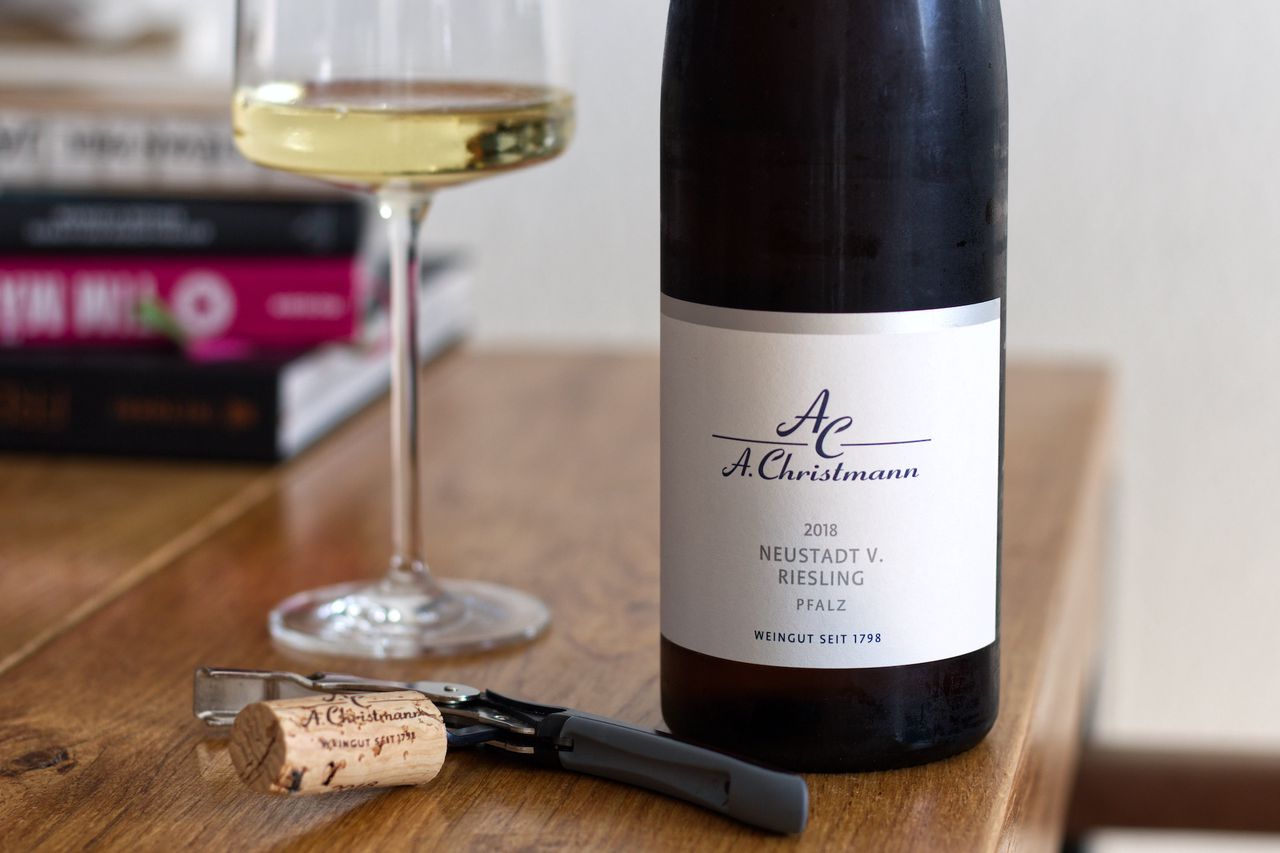Christmann - Neustadt V. 2018
We drink from the Palatinate a Riesling Neustadt V from the Christmann winery harvested in 2018.

What do Grosse Lage vineyards actually do before they become Grosse Lage. Or have they perhaps always been great and no one bothered putting the right label onto them. An attempt at an insight could be the wine today. In 2018, the two Palatinate wineries Müller-Catoir and Christmann leased eight hectares of old vineyards from the municipality of Neustadt. There, Riesling areas were taken over and additionally Pinot Noir and further Riesling were newly planted. In 2019, three vineyards were then removed from the existing Neustadter Mönchgarten site and brought together under the new Neustadter Vogelsang site. At around 240 meters above sea level, the sites are among the highest in the region and the vines are planted on very old limestone soil. With the 2020 vintage, the first wines will now actually be put on sale as Grosses Gewächs. One wants to connect with past times, the first mentions of the Vogelsang sites can be found in the 13th and 14th centuries. Since the VDP Großes Gewächs wines are not allowed to come onto the market until September at the earliest, we naturally cannot have a bottle from 2020 in the glass. Instead, we drink a Neustadt V from 2018 made by Christmann. The wine is filled as a Ortswein and comes from the Riesling vines taken over, which were immediately farmed organically like all other vineyards at Christmann, but were still in transition at the time. Let’s see how it tastes, such a wine from a freshly baked, but not yet quite existing Grosse Lage.
Due to curiosity, the first sip ends up a good bit too warm in the glass. This certainly contributes a bit to the intense nose. The fruit is yellow, along with plenty of minerality and flint. Very intense and dense on the nose. On the tongue, it is above all structure that arrives. Some pome fruit to it, but structure dominates on the middle of the tongue. The Riesling has draw and a strong acidity. Overall, the aromatics are rather dark with plenty of power. While the structure sticks to the palate the nose changes and becomes more refined and gets a hint of creaminess.
Later and better tempered, the fruit lingers on the nose. A bit exotic, citrus, mirabelle, rather ripe. The fruit that is, not the wine. In the ripeness of the fruit you can also feel the warm, dry year. Still, this is not at all a fat wine, being brought into the cellar at the right time with its 12% and the juicy, crisp acidity. The minerality recedes a bit and the wine becomes a bit softer and rounder overall. It wasn’t bad at all that the first sip came into the glass so warm, because even now the Riesling clearly benefits again from a few degrees more in the glass. It becomes more powerful and I think that suits it well.
After a night in the refrigerator, the fruit tends more clearly in the direction of pome fruit. Apples, pears and a bit of acetone. On the tongue, there is still a lot of tension. The acidity is strong, as is the structure. This is Riesling to chew on and I don’t need that with every bottle of wine, but when I feel like it, I love it a lot. It retains the mouth watering juiciness today as well.
I maintain that you can taste the Grosse Lage and there is definitely quite a bit of potential in the vineyard. I also think that there is potential in the wine for a few more years in the cellar and for the around 20 Euros that the wine costs, you have an incredible amount of Riesling in the glass. It will be exciting to see what the next years, then bottled as Vogelsang, will bring.